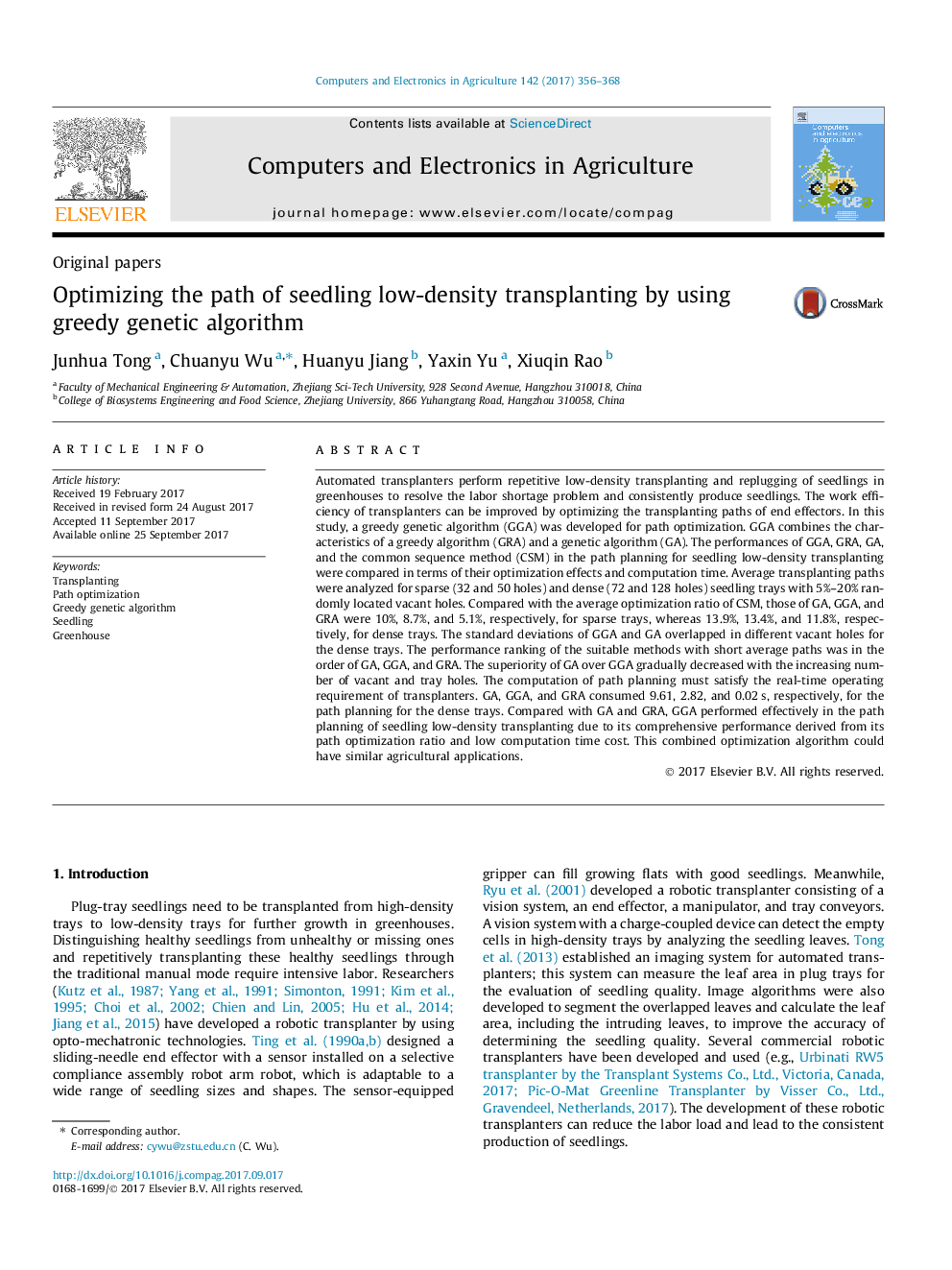| کد مقاله | کد نشریه | سال انتشار | مقاله انگلیسی | نسخه تمام متن |
|---|---|---|---|---|
| 6458705 | 1361745 | 2017 | 13 صفحه PDF | دانلود رایگان |
- A greedy genetic algorithm was developed for seedling low-density transplanting.
- Common sequence methods, greedy algorithms, and genetic algorithm were also examined.
- Performance of path optimization ratio and computational time cost were compared.
- Relative to others, the greedy genetic algorithm showed superior performance.
Automated transplanters perform repetitive low-density transplanting and replugging of seedlings in greenhouses to resolve the labor shortage problem and consistently produce seedlings. The work efficiency of transplanters can be improved by optimizing the transplanting paths of end effectors. In this study, a greedy genetic algorithm (GGA) was developed for path optimization. GGA combines the characteristics of a greedy algorithm (GRA) and a genetic algorithm (GA). The performances of GGA, GRA, GA, and the common sequence method (CSM) in the path planning for seedling low-density transplanting were compared in terms of their optimization effects and computation time. Average transplanting paths were analyzed for sparse (32 and 50 holes) and dense (72 and 128 holes) seedling trays with 5%-20% randomly located vacant holes. Compared with the average optimization ratio of CSM, those of GA, GGA, and GRA were 10%, 8.7%, and 5.1%, respectively, for sparse trays, whereas 13.9%, 13.4%, and 11.8%, respectively, for dense trays. The standard deviations of GGA and GA overlapped in different vacant holes for the dense trays. The performance ranking of the suitable methods with short average paths was in the order of GA, GGA, and GRA. The superiority of GA over GGA gradually decreased with the increasing number of vacant and tray holes. The computation of path planning must satisfy the real-time operating requirement of transplanters. GA, GGA, and GRA consumed 9.61, 2.82, and 0.02Â s, respectively, for the path planning for the dense trays. Compared with GA and GRA, GGA performed effectively in the path planning of seedling low-density transplanting due to its comprehensive performance derived from its path optimization ratio and low computation time cost. This combined optimization algorithm could have similar agricultural applications.
Journal: Computers and Electronics in Agriculture - Volume 142, Part A, November 2017, Pages 356-368
